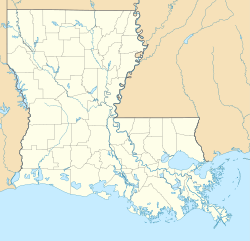Trinity Episcopal Church | |
 Front and south side of church in 2005 | |
Location of church in Louisiana | |
| Nearest city | Cheneyville, Louisiana |
|---|---|
| Coordinates | 31°1′20″N92°17′23″W / 31.02222°N 92.28972°W |
| Area | 2 acres (0.81 ha) |
| Built | 1860 |
| Architect | William Henry Chase |
| Architectural style | Gothic Revival |
| NRHP reference No. | 80001754 |
| Added to NRHP | 16 October 1980 [1] |
Trinity Episcopal Church is located in Cheneyville, Louisiana.



